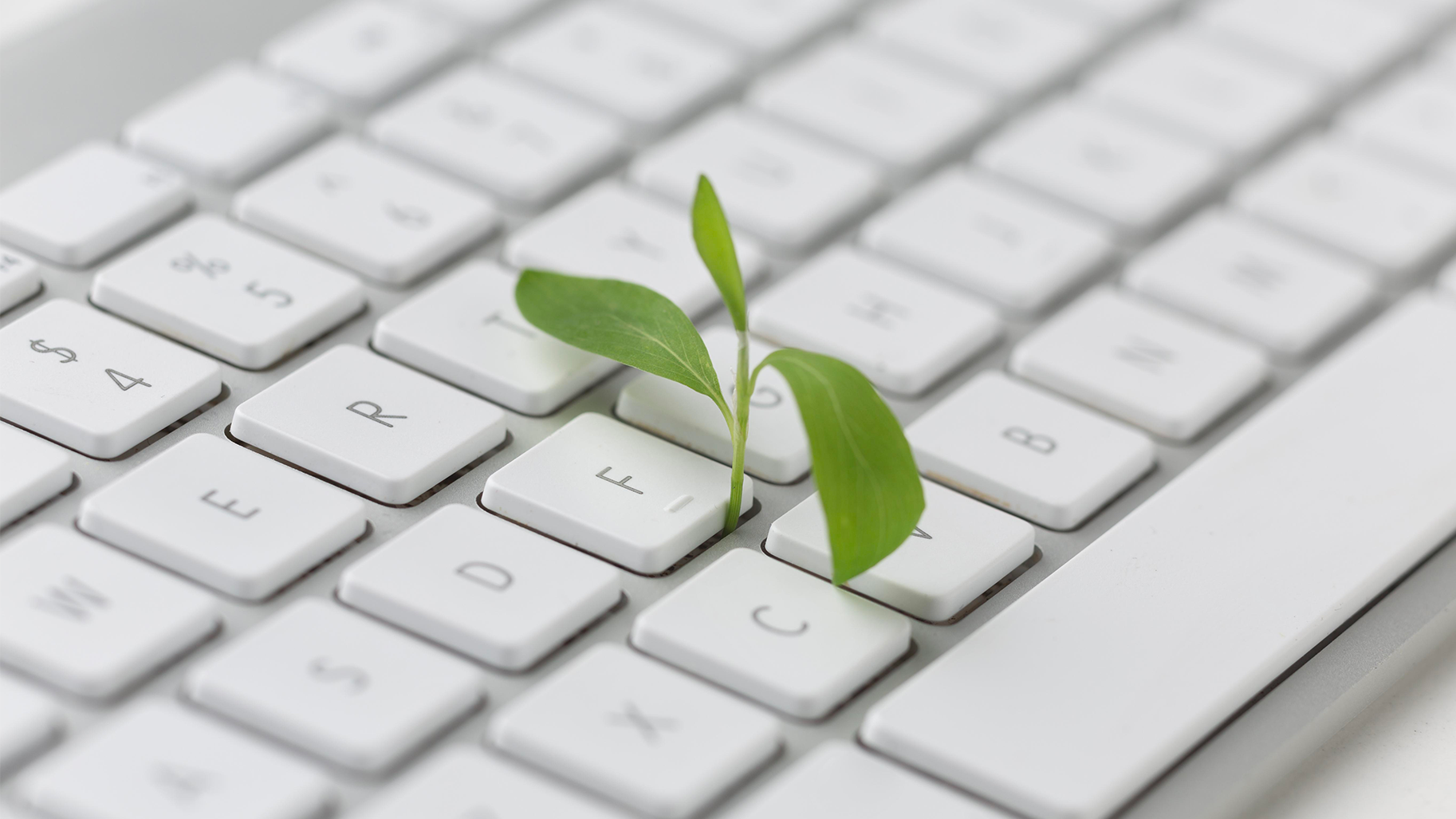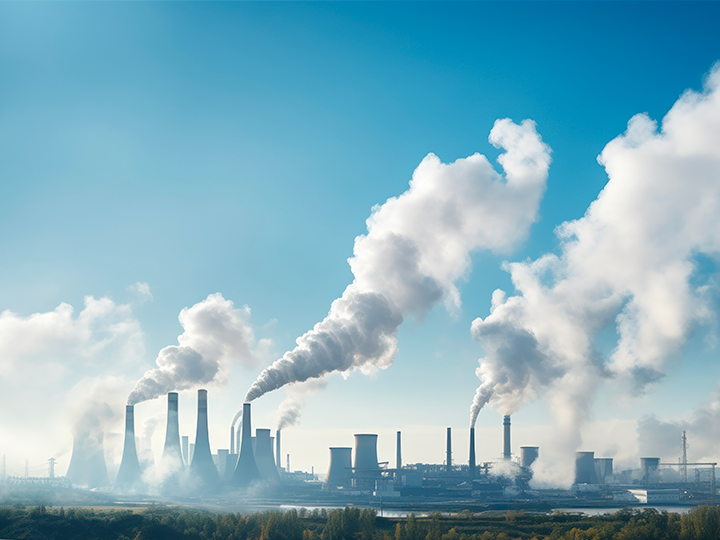
The challenges of decarbonization for society are manifold. In addition to combating climate change, decarbonization helps to reduce air pollution, create jobs in the renewable energies sector and promote the energy independence of countries. It also contributes to the transition to a more sustainable, environmentally-friendly economy. And digital sciences can play a key role in the transition to a low-carbon economy. For example, they can help optimize energy management and efficiently integrate renewable energies into the power grid, or model and simulate numerous phenomena to design innovative solutions to accelerate this transition to a more sustainable, environmentally-friendly future. The Pleiade project-team at the Inria Centre at the University of Bordeaux is taking up this challenge by working on projects in collaboration with IFPEN and INRAE, with a view to achieving the European objective of carbon neutrality.
Carbon neutrality by 2050
Achieving carbon neutrality for the European continent by 2050 is an ambitious goal shared by France and its European partners in the fight against climate change. Currently, French industry is responsible for 20% of the country's greenhouse gas (GHG) emissions, such as carbon dioxide (CO2) and methane (CH4), making it a key sector to transform. However, the challenge is daunting, as fossil fuels and technologies have long been at the heart of the industry since the first industrial revolution over 200 years ago.
To achieve this goal, it will be necessary to modify old production methods over the space of three decades. The France 2030 plan provides for substantial public financial support to encourage innovation and the development of French decarbonization solutions. The French government is mobilizing 54 billion euros to bring about lasting change in key sectors such as energy, the automotive industry, aeronautics and space, in order to position France as a leader in tomorrow's world.
Fossil fuel consumption is the world's leading source of CO2 emissions (80%), and reducing this dependence is crucial. The European Union's strategy for achieving carbon neutrality by 2050 is based on replacing fossil fuels with low-carbon energies. It is important to note that carbon neutrality does not mean a total halt to GHG emissions, but rather a maximum reduction accompanied by offsetting by equivalent absorptions. In parallel with the decarbonization of energy and the reduction of consumption, it is therefore essential to ensure that emissions are offset by equivalent absorptions, by preserving and developing carbon sinks.
Better carbon sequestration thanks to bioinformatics
Carbon sequestration captures carbon dioxide at source and stores it underground. Today, there are pilot sites for this process that fix this carbon at depths of over two kilometers below the Earth's surface, in saline aquifers well below the water table, with a view to avoiding any potential leakage. Numerous research projects aim to improve this sequestration by exploiting the geological characteristics of these depths.
However, the role of biological and chemical processes is less well understood, and here the Pleiade project-team, in collaboration with IFPEN, is bringing the digital sciences to bear: “We are modeling the biological interactions that occur in subsoils at the level of carbon sinks, and want to identify whether the involvement of certain microbial communities could be beneficial for carbon fixation, for example by promoting the impermeabilization of sink walls through the creation of biofilms, or by precipitating carbon in solid form”, explains David Sherman, head of the Pleaide project-team. The aim is to better trap carbon to prevent future leakage. “By combining IFPEN's geological and chemical models with the microbial community models we are developing at Pleiade, we aim to predict which microbial consortia could form these biofilms”.
By studying both individual reactions at microbial level, as well as community reactions on a broader scale, Pleiade aims to provide tools for modeling these different biological systems, in order to contribute to the fight against greenhouse gases, and more broadly, to the various activities involved in adapting to climate change.
Reducing the carbon produced by livestock farming
Livestock farming is responsible for most of the world's agricultural greenhouse gas emissions, in particular methane, which has a global warming potential 28 times greater than that of carbon dioxide over a 100-year timeframe. In France, this gas emitted by ruminants accounts for 48% of greenhouse gases in the agricultural sector, and also represents a significant loss of energy (around 6%) for the animal.
During ruminant digestion, CH₄ is produced when feed is fermented in the rumen (the animal's first stomach). This process is controlled by the activity of an extremely diverse microbial ecosystem, comprising bacteria, protozoa, fungi and Archaea. The methane produced in this way is mainly expelled by the animal through belching.
Reducing these CH4 emissions while optimizing digestive efficiency, productivity and animal health is a major challenge for the livestock sector. This is one of the key areas of research at INRAE. How can digital technology help? The INRAE MoSAR and Herbivores teams, together with the Pleiade project team, are proposing a highly ambitious research project: to model the microbial ecosystem of the rumen in order to determine whether it is possible to transform the methane produced into another gas, less harmful to the planet and to the animal itself.
Verbatim
As scientists, we have a duty to explore all possible avenues for decarbonization: whether upstream of emissions, like the ruminant project, or downstream, like the carbon sink project. We have to try everything!
Inria Research Director
Focus on the MISTIC project: exploring crop microbiomes using digital sciences
MISTIC is a collaborative project stemming from the PEPR Agroecology and Digital Science program. Involving the Pleiade project-team, Institut Sophia Agrobiotech and the Genscale project-team, the project aims to understand the crucial role of microbial communities in crop adaptation to climatic and environmental changes.
By combining complementary approaches in environmental metagenomics and digital simulation, it opens up new, more resilient perspectives on the scale of an entire agricultural plot.
This is a further step in the fight against climate change, in parallel with the decarbonization-related projects presented above.
